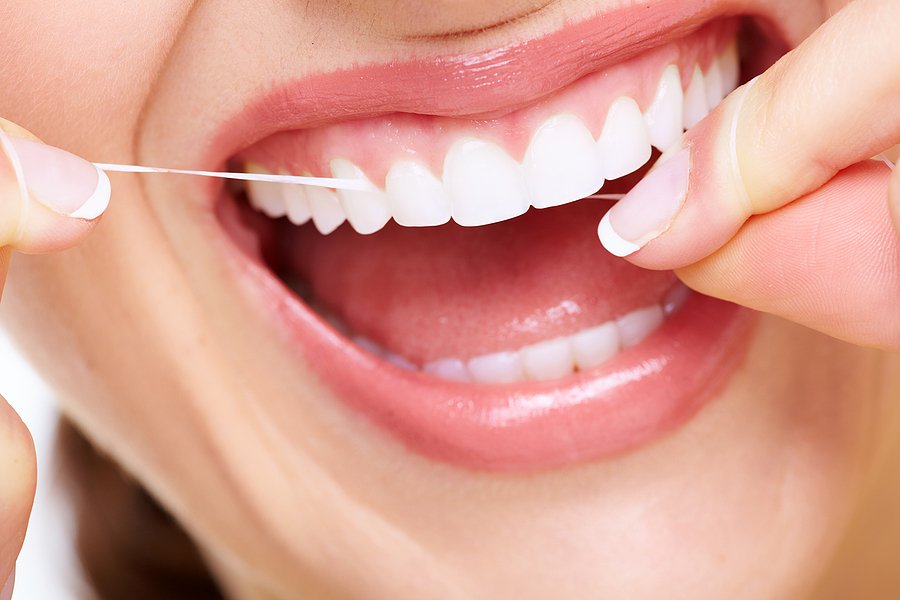
Flossing is a crucial part of dental hygiene & health. Though the toothbrush is helpful in cleaning most of your teeth’s surfaces, floss is needed to fill in the gaps. It reaches in between the teeth & along the gumline—places that your toothbrush cannot reach, no matter how much you maneuver. Floss seeks to disrupt & eliminate the formation of any dental plaque. If that plaque were to stay untouched, it could easily turn into calculus & gingivitis.
With all that said, what are the different ways that you can floss to protect your gum health?
Choose Your Fighter: Types of Floss
There is not necessarily one “best” way to floss because each tool has its fair share of advantages & disadvantages. Choices can also differ based on people’s flexibility, teeth structure & personal preferences.
String Floss
Starting with the age-old classic: string floss!
In this method, you would typically break off 18–24 inches of floss, wind most of it around your middle fingers & then use your thumb & index fingers to maneuver as you hold the string taut. The process includes gently gliding the floss up & down against both sides of each tooth, removing food bits & continually sliding to new segments of floss as you go.
This tried & true method of flossing is the dentist-recommended default for good reason. It has been proven to be effective at removing plaque & it is the cheapest option! However, this method of flossing can be more difficult for reaching the back of your mouth, especially if you are a child or do not have the best finger flexibility. It is also hard to use with braces.
Floss Pick
The floss pick is a more condensed version of the traditional string floss. It uses a single thread of floss stretched between a plastic U-shaped holder. Similarly to the traditional string floss, you glide the string up & down both sides of each tooth to remove plaque. The main difference is that you are using the same piece of floss throughout, so it is recommended to rinse or wipe off collected bits of food in between.
People who choose picks over the loose string find that the picks are easier to use. The plastic handle allows for easier grip & lowers risk of hand irritation for those with more sensitive skin. It is also more child-friendly & makes reaching the back of your mouth easier. However, given that there is more limited string, it may not be as flexible or effective at reaching areas close to or under the gum line. It is also not feasible to use with braces.
Proxy Brush
A proxy brush (aka interdental brush) is a small & flexible brush that has a plastic handle on one end & soft bristle heads on the other. They come in various sizes, so it is important to find one that fits between the spaces in your teeth. Unlike floss strings where you should glide up & down each side of a tooth, the proxy brush goes in between the gaps of your teeth & you brush backwards & forwards a couple times. If the brush gets stuck, you should opt for a smaller one.
One of the major perks of the proxy brush is that it is reusable (until the bristles get worn out) & easy to use with braces! Some people also find the tool easier to control than floss. However, it may be more difficult to maneuver in tight places or crowded teeth.
Water Floss
Water flossing uses an oral irrigation device to spray a steady stream of water between your teeth & gums as a way to clear out any plaque & food bits. Once you fill the water flosser’s reservoir with lukewarm water, you place the tip of the floss nozzle against your teeth & follow your gum line, going tooth-by-tooth & in between gaps. Empty the reservoir after you’re done to prevent bacteria from growing in your still water.
Though a water floss works in removing plaque & is generally easier to use, especially for children, elderly & those with braces, it is recommended as a supplement rather than a complete replacement for traditional flossing. It cannot curve between teeth like string floss or proxy brushes would. Plus, unlike the convenient, can-floss-anywhere nature of the other three options, a water floss requires water & electricity to function.
Floss Is the Boss
At the end of the day, there are many ways to floss, but regardless of which method you choose, all that matters is that you do it! Brushing alone is not enough— flossing daily (& before you brush!) is the main way to protect your gum health.
Sources:
https://www.nidcr.nih.gov/health-info/gum-disease/ask-the-expert
https://www.healthline.com/health/how-to-floss#how-to-floss
https://northsidedental.com/how-to-use-dental-floss-picks-properly/
https://www.sunstargum.com/gb-en/oral-health/how-to-use-interdental-brush.html
https://oralb.com/en-us/oral-health/why-oral-b/floss/how-to-use-water-flossers
https://www.healthline.com/health/dental-and-oral-health/floss-before-or-after-brushing#floss-first
